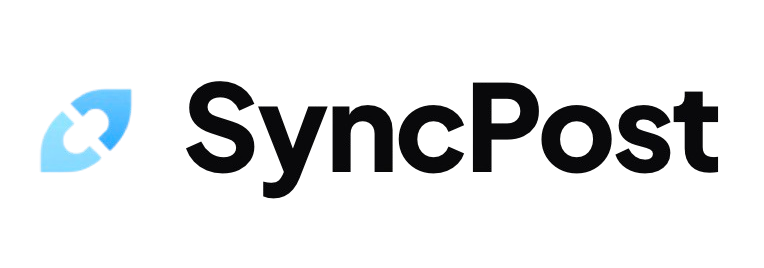
Understanding Social Media Automation Fundamentals
Social media automation is simply using tools to schedule and post your content automatically instead of doing it manually each time. Think of it as your personal assistant who handles your social media tasks while you focus on other parts of your business.
Remember those days of logging into each social platform to post updates? Now you can set up a week's worth of posts in one sitting, and your automation tools will publish them at the perfect times.
Automation helps you save hours each week by handling repetitive tasks like posting updates, sharing content, and even responding to common messages. It's like having a clone of yourself working 24/7 on your social media presence.
The switch to automation happened because manual posting became too time-consuming as social media grew. Smart business owners realized they needed a better way to keep up with multiple platforms without spending their entire day on social media.
You'll find automation especially helpful when managing multiple social accounts. Instead of jumping between different tabs and apps, you can control everything from one place.
For today's marketing needs, automation isn't just helpful – it's necessary. You can't compete effectively if you're still doing everything by hand while your competitors use tools to work smarter.
Key Benefits of Marketing Automation
Marketing automation saves you hours of repetitive work each week. Instead of manually posting content or sending emails, you can set up your campaigns once and let them run smoothly.
Your marketing tasks become more reliable with automation. No more forgetting to post at the right time or missing important follow-ups with customers - the software handles these tasks consistently.
When you automate your marketing tasks, you cut down on common mistakes like typos or incorrect posting times. The system follows your preset rules perfectly every time, which means fewer embarrassing errors in your campaigns.
Here's how automation helps your team work better:
-
More time for creative tasks and strategy
-
Faster response to customer messages
-
Better tracking of marketing results
-
Easier management of multiple campaigns
Your team can focus on what matters most - creating great content and building relationships with customers. The routine tasks run in the background while you work on growing your business.
By letting software handle repetitive tasks, you can assign your team to more important work. This means getting more done without hiring extra help or working longer hours.
Essential Social Media Management Tools
Running multiple social media accounts without proper tools is like trying to juggle while riding a bicycle. You need the right tools to keep everything organized and running smoothly.
Let's look at the must-have tools based on what you're trying to achieve with your social media presence.
For scheduling and content planning, Buffer and Hootsuite are popular choices. These tools let you plan and schedule posts across different platforms from one dashboard.
Here's what to look for in a good scheduling tool:
-
Post scheduling across multiple platforms
-
Content calendar view for better planning
-
Media library for storing and reusing images
-
Team collaboration features
-
Mobile app for on-the-go management
For tracking your performance, Sprout Social provides detailed analytics and reporting. It helps you understand what content works best with your audience.
When choosing your tools, consider these factors:
-
Your budget - prices range from free to hundreds per month
-
Number of social accounts you manage
-
Team size and collaboration needs
-
Specific features you can't live without
Small businesses might start with free tools like Canva for graphics and Later for Instagram management. As you grow, you can upgrade to more comprehensive solutions.
For specialized needs, some tools focus on specific platforms. SyncPost helps you sync content between Twitter and Bluesky, making it easier to maintain presence on both platforms without extra work.
Remember, you don't need every tool out there. Pick the ones that match your needs and make your social media management easier.
Creating an Automated Content Calendar
An automated content calendar helps you plan and schedule your content ahead of time. This simple tool can save you hours of work each week and keep your content flowing consistently.
Start by identifying your main content themes. Pick 3-4 core topics that align with your expertise and what your audience wants to learn about.
Here's how to set up your posting schedule:
-
Choose 2-3 posting times that work best for your audience
-
Assign different content types to specific days (like tips on Tuesday, case studies on Thursday)
-
Plan content at least one month ahead
-
Include space for timely or seasonal content
Mix up your content formats to keep things fresh. You can rotate between how-to guides, quick tips, customer stories, and industry updates to maintain audience interest.
The key to good variety is creating content templates for each type. Having templates ready makes it easy to plug in new information while keeping your style consistent.
Remember to review and adjust your calendar every month. Look at what content performed well and use those insights to plan your next batch of posts.

Cross Platform Content Distribution
Sharing your content across different social platforms can feel like speaking multiple languages at once. Each platform has its own rules, image sizes, and text limits.
Using tools like Buffer or Hootsuite helps you manage posts across platforms from one place. These tools automatically adjust your content to fit each platform's requirements.
Here's how content should change for each major platform:
-
Instagram: Focus on square images and use up to 10 relevant hashtags
-
Twitter: Keep text under 280 characters and use 1-2 hashtags
-
LinkedIn: Write longer, professional content and skip the hashtags
-
Facebook: Mix images and text, with 1-3 hashtags maximum
You can save time by creating content templates for each platform. This helps maintain your brand voice while respecting platform differences.
Most scheduling tools let you set up posting rules. You can create one main post and the tool will adjust it automatically for each platform.
Remember that auto-posting the exact same content everywhere isn't effective. Small tweaks in tone and format help your content perform better on each platform.
Automation Workflow Setup
Setting up a social media automation workflow saves you hours of manual work each week. Let's create a system that runs smoothly and delivers results.
First, pick your main automation tool. Buffer and Hootsuite are popular choices that work well for most businesses.
Here's how to set up your workflow:
-
Create a content calendar with posting times
-
Connect your social media accounts to your automation tool
-
Set up content categories for different post types
-
Add team members and assign roles
-
Create posting templates for consistency
Now it's time to connect your tools. Your automation platform should link to your content creation tools, analytics software, and customer relationship management system.
Testing is crucial before going live. Schedule a few test posts and check if they appear correctly on all platforms. Watch for image cropping issues and link previews.
Make these checks part of your testing process:
-
Post timing accuracy
-
Image and video display
-
Link functionality
-
Hashtag formatting
-
Mention tags
After launch, check your analytics weekly. Look at engagement rates and adjust your posting schedule based on when your audience is most active.
Keep improving your workflow by removing steps that don't add value. Try new posting times and content types to find what works best for your audience.
Content Scheduling Best Practices
Finding the right time to post your content can make a big difference in how many people see and engage with it. Your audience has specific times when they're most active on social media and likely to interact with your posts.
Start by checking your social media analytics to find out when your followers are online. Each platform is different - Instagram users might be active in the evening, while LinkedIn gets more engagement during work hours.
Here are the key factors to consider when setting up your posting schedule:
-
Peak Hours: Post when your audience is most active
-
Consistency: Pick specific days and times and stick to them
-
Frequency: Share 1-2 posts per day on most platforms
-
Time Zones: Adjust posting times if you have an international audience
Using scheduling tools can save you hours of work each week. Tools like Buffer or Hootsuite let you plan and schedule your posts ahead of time, so you don't have to be online 24/7.
But remember - social media is about being social. Set aside time each day to respond to comments and messages in real-time, even when using scheduling tools.
Mix your scheduled posts with spontaneous updates about current events or behind-the-scenes content. This combination keeps your feed feeling fresh and authentic while maintaining a consistent presence.
A good rule is to make 70% of your content scheduled and 30% real-time. This way, you stay organized while keeping room for timely interactions that make your brand feel more human.
Measuring Automation Success
Starting your automation journey is exciting, but you need clear ways to measure if it's working.
The first step is picking the right metrics to track. Here are the key numbers you should monitor:
-
Time saved per task or process
-
Error reduction percentage
-
Cost savings from reduced manual work
-
Employee satisfaction scores
-
Process completion speed
Calculating your automation ROI is simpler than you might think. Add up the hours saved multiplied by employee hourly rates, then subtract the cost of your automation tools.
Look at your metrics weekly or monthly to spot trends. Are certain automated processes performing better than others?
When you notice areas that aren't meeting targets, try small adjustments first. Maybe your automated email system needs better triggers, or your data entry automation needs updated rules.
Get feedback from your team members who use these automated systems daily. They often have the best insights on what's working and what needs fixing.
Remember that automation success looks different for each company. Focus on the metrics that matter most to your specific goals and keep adjusting until you hit your targets.

Automation Pitfalls to Avoid
Picture scheduling a month's worth of social media posts, only to have a major world event happen that makes your content seem tone-deaf. This is just one example of automation gone wrong.
One of the biggest mistakes is setting up too many automated posts. Your followers can spot robotic behavior quickly, and it hurts your authenticity.
Here are the key automation pitfalls and how to avoid them:
-
Over-automation: Mix automated posts with real-time content. Keep at least 20% of your posts manual and responsive to current events.
-
Poor timing: Avoid posting the same content at the exact same times. Add variety to your scheduling.
-
Generic responses: Create different response templates for common questions instead of using one standard reply.
Remember to check your automated content regularly. Set up notifications for your posts and monitor engagement patterns to spot potential issues early.
The best approach is treating automation as your assistant, not your replacement. Stay involved in conversations, respond to comments personally, and adjust your automated content based on what your audience enjoys.
Keep a close eye on your engagement metrics. If you notice a drop, it might be time to reduce automation and add more personal touches to your social media presence.
Human Touch in Automated Marketing
Marketing automation makes your life easier, but your customers still want to feel like they're talking to real people. The key is finding the sweet spot between efficiency and personal connection.
Think of automation as your assistant, not your replacement. You can automate routine tasks like welcome emails and order confirmations while keeping personal interactions for important customer moments.
When should you handle things personally? Reserve manual responses for customer complaints, complex questions, and high-value client communications.
Here's how to keep your automated messages feeling personal:
-
Add the customer's name and relevant details to automated emails
-
Write your automated responses in a casual, friendly tone
-
Include a real reply-to email address
-
Set up triggers based on customer behavior, not just time
Remember that some channels need more human attention than others. Social media comments and direct messages usually deserve a personal response, while appointment reminders can stay automated.
The best approach is to use automation to free up time for meaningful conversations. When a customer leaves a thoughtful comment or asks for advice, take the time to respond personally.
Your customers can tell the difference between a canned response and a genuine interaction. Make sure every automated message sounds like it could have been written just for them.
Advanced Automation Strategies
Social media automation helps you save time while keeping your accounts active. You can now use AI tools to write posts, create images, and even respond to basic comments.
Buffer and similar tools let you prepare a week's worth of posts in one sitting. Set them up once, and they'll post at the best times when your followers are most active.
AI writing assistants can help you create different versions of your posts. They analyze what works best for each platform and suggest improvements to your writing.
Here are the most useful automation features to try:
-
Post scheduling: Plan content weeks in advance
-
Auto-responses: Set up quick replies for common questions
-
Content suggestions: Get ideas based on your top posts
-
Analytics tracking: Get reports on what's working
Smart automation also means knowing when to step in personally. Keep some posts and responses manual to maintain an authentic connection with your followers.
The newest AI tools can now create custom images and videos for your posts. This means you can make more content in less time, while keeping your style consistent.
Remember to check and adjust your automation regularly. What worked last month might need updates based on how your audience responds.
Next Steps in Marketing Automation
Getting started with social media automation doesn't have to be complicated. You can begin by looking at your daily social media tasks and spotting the ones that take up most of your time.
Start with these simple steps to make automation work for you:
-
Pick one repetitive task to automate first (like posting updates across platforms)
-
Set up a content calendar for scheduled posts
-
Create templates for common responses to messages
-
Track basic metrics like engagement rates and post reach
The best way to start is by automating your post scheduling. This saves you time and helps maintain a consistent posting schedule without having to remember to post manually every day.
You can also automate your social media monitoring. Set up alerts for brand mentions and customer feedback, so you never miss important conversations about your business.
Testing different posting times becomes easier with automation tools. You can schedule content for various times and check which hours get the most engagement from your followers.
Remember to check your automated systems regularly. Make sure your scheduled posts still make sense and your response templates stay up to date with your current business information.
Our recommendation is to explore automation tools that match your specific needs. For example, if you need to sync posts across different platforms, try a specialized tool like SyncPost.
